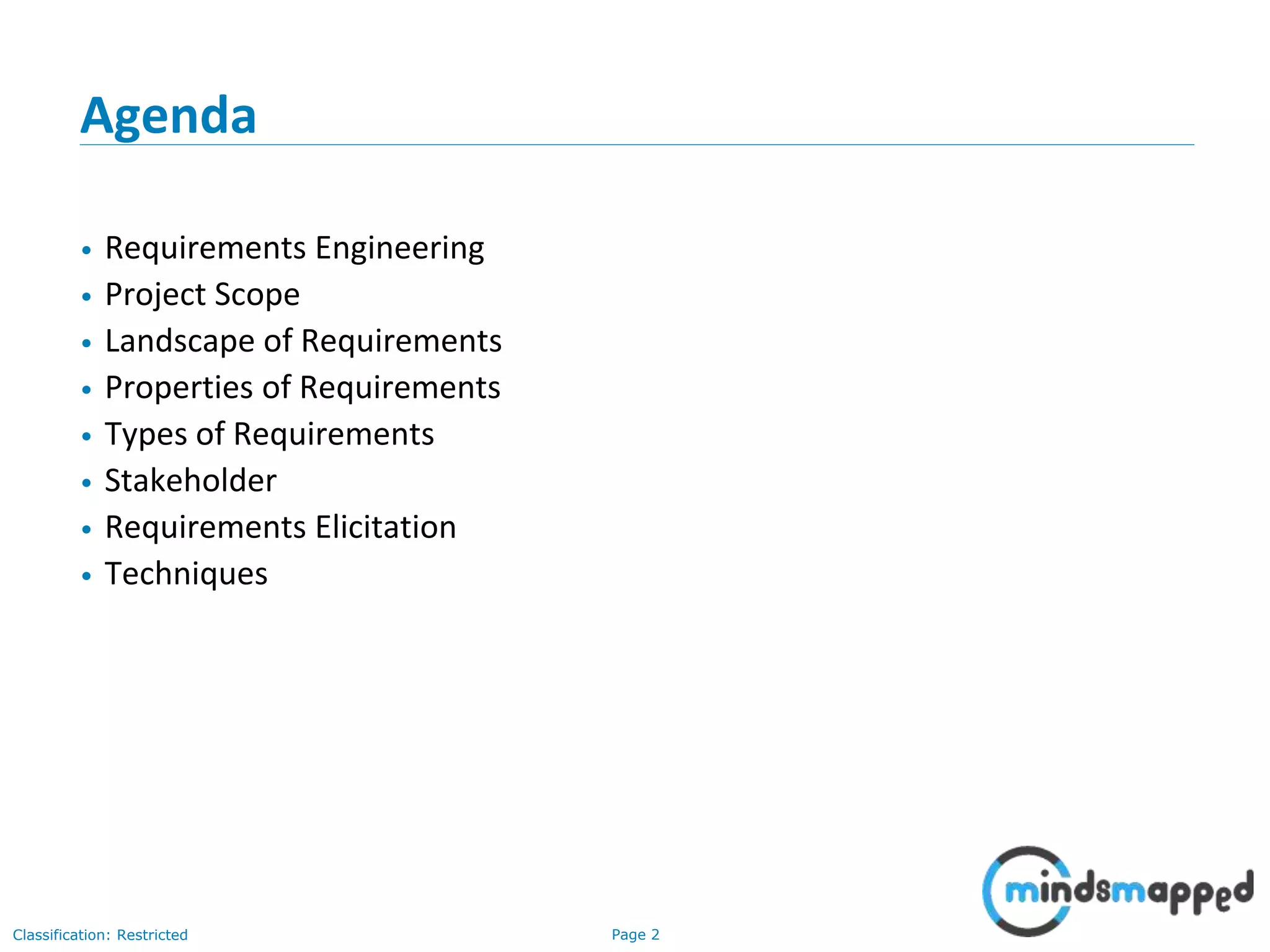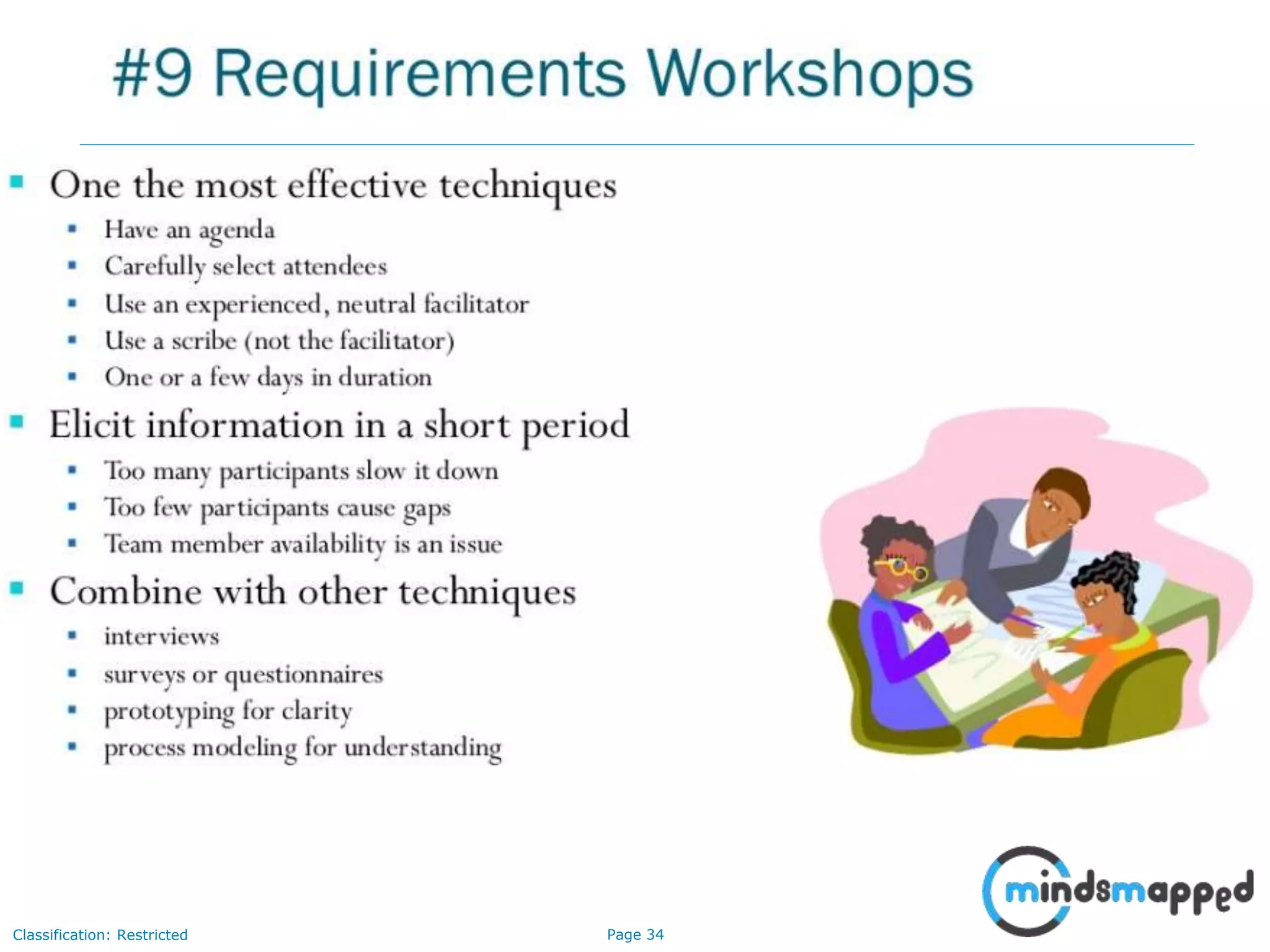The document outlines various techniques for requirements elicitation in business analysis, including stakeholder analysis, interviews, and focus groups. It emphasizes the distinction between types of requirements such as business, user, stakeholder, and solution requirements, as well as the roles of stakeholders in project execution. It also highlights the importance of requirements engineering in establishing clear, quantifiable expectations for projects.





































